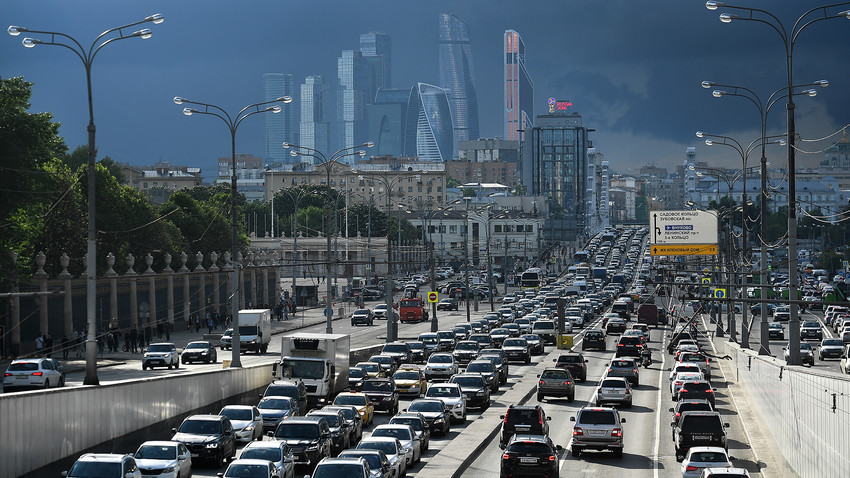How Moscow is getting rid of its traffic jams

Moscow traffic is really overloaded, so the authorities spare no effort trying to improve the city's infrastructure
Ramil Sitdikov/RIA NovostiIf you’ve never been to the Russian capital, you’ve never experienced a true traffic jam. Hours spent in the car on the way home, moving at a snail’s pace, people angrily honking their horns – it really is rather depressing.
Despite the
“We are implementing a project aimed at developing Moscow as a transport hub, which includes roads, railroads, and the metro,” Sobyanin stated during his meeting with Putin on Nov. 15.
Station to station
The authorities are focusing on the city’s rail system and working with the state-owned Russian Railways company. In 2016 they opened the Moscow Central Circle (MCC), an urban line that connected relatively remote districts of the capital to reduce pressure on the underground system. Around 400,000 people use the MCC daily – that’s almost 150 million passengers a year.
Now that the MCC is up and running, the city hall is launching a new project called Moscow Central Diameters, which will build overground railway lines connecting towns in the Moscow region.
Faster connection
“Now suburban railways go to stations and stop there – these are dead ends in fact,” Sobyanin explained. He says connecting railways in the city will make the infrastructure more efficient. For instance, one of the new diameters will connect Odintsovo (26 km west of Moscow) and Lobnya (40 km north) with a direct line.
According to Oleg Belozerov, the president of Russian Railways, the new line will service 43 million passengers a year, cutting the journey time from Odintsovo to Lobnya in half. Tourists will also benefit: After the project is completed, it will only take an hour to travel from one airport to another, which is great if you need to change for a connecting flight.
The first two diameters, which will bear 30 percent of the whole project, are expected to be finished by the middle of 2019. As for the rest, Sobyanin says it will take up to five years to implement the whole project. In total, it should provide 300 million people with quicker transport.
If using any of Russia Beyond's content, partly or in full, always provide an active hyperlink to the original material.
Subscribe
to our newsletter!
Get the week's best stories straight to your inbox